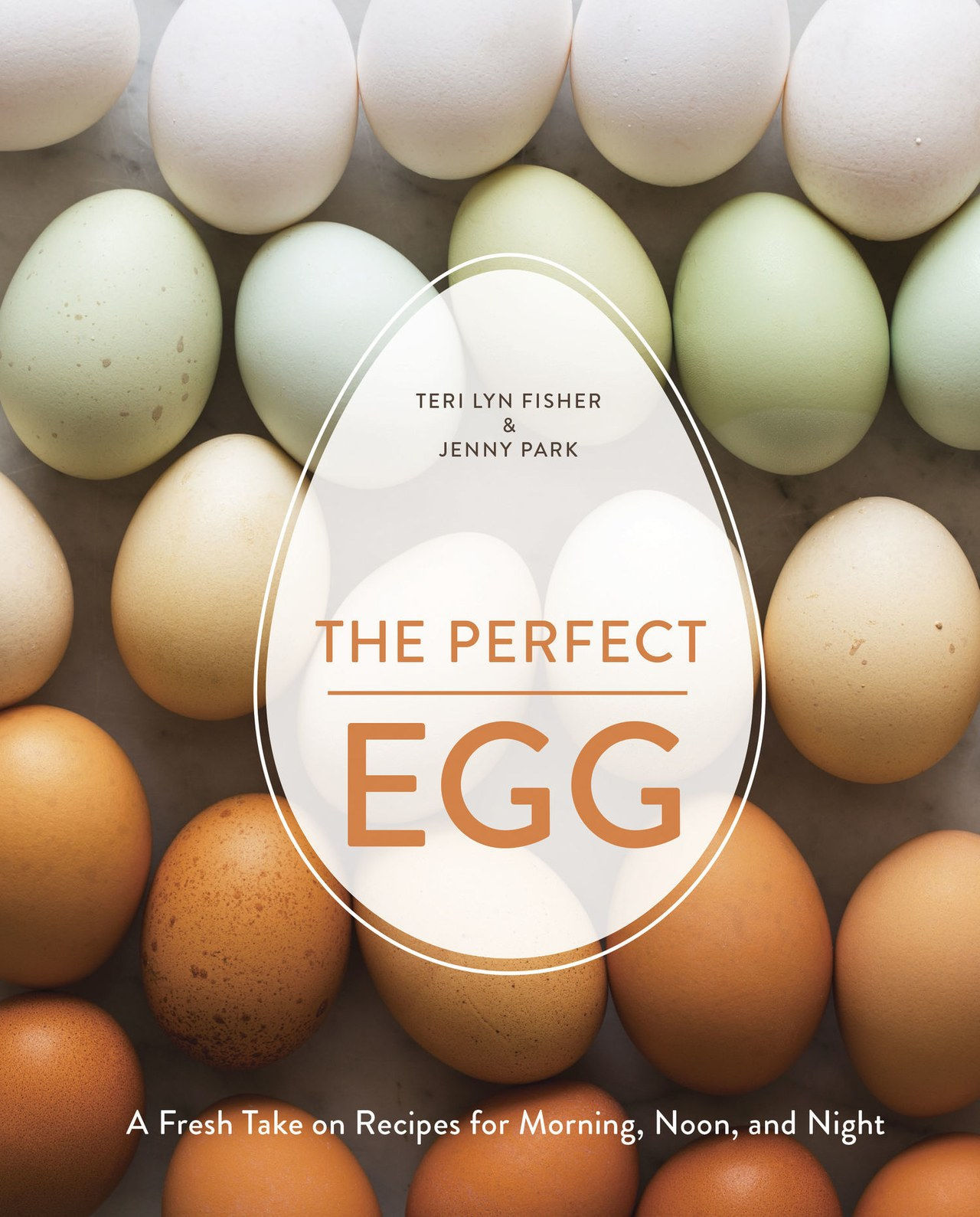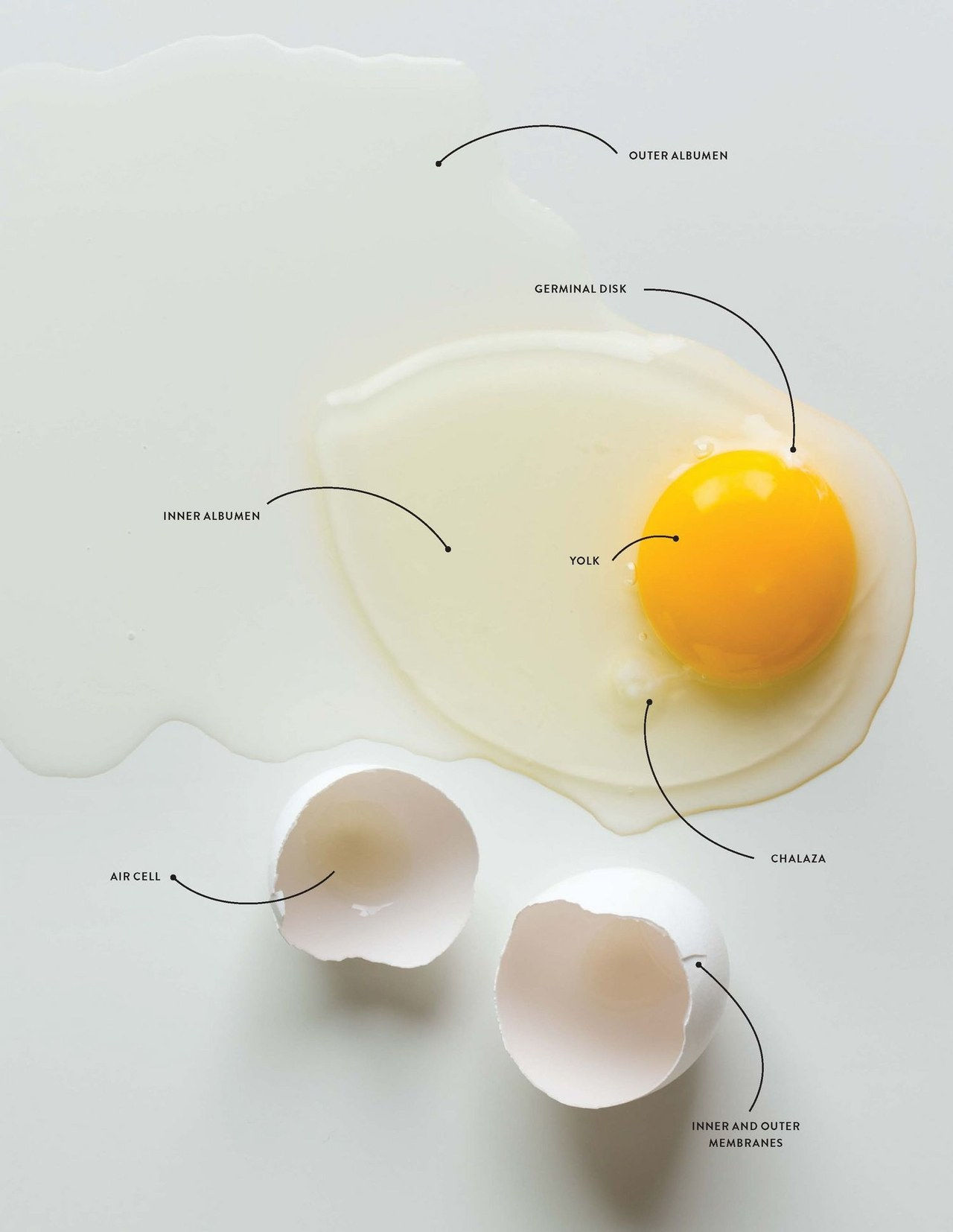What’s in an Egg? Shell, White, Yolk and Other Anatomically Correct Terminology
Eggs. In a nation obsessed with steak and lobster, eggs are the unsung hero of the American kitchen. I mean, they’re the hero of my kitchen, for sure. Pop open the fridge on any given day and there will be two dozen organic free-rangers in there just waiting to be scrambled, poached, hard-boiled, soft-boiled, baked into cakes, and dropped into soups.

The brand-new book The Perfect Egg (out today!) is chock-full of amazing eggy recipes perfect for breakfast, lunch, snacks, or dinner. And it’s also a fascinating deep-dive into what, exactly, is in an egg: from a breakdown of varietals (ostrich eggs are now available at my local Whole Foods; have you seen them at yours?), a decoding guide to carton labeling, and even a 101 on cooking techniques.
Here’s one of my favorite parts of the book—that authors Teri Lyn Fisher and Jenny Park have been kind enough to let us excerpt. It’s all about the actual anatomy of the egg. Do you know what all the parts of your egg are called?

Anatomy of an Egg
Here we break down the egg to show you its primary components and how each of them contributes to the whole.
SHELL: Made up primarily of calcium carbonate, the egg’s outermost layer is porous, allowing both air and moisture to pass through. That means that over time, an egg will absorb odors and flavors and lose moisture. A super-thin coating sheaths the shell to help prevent dust particles and bacteria from penetrating. Because eggshells are high in calcium and vitamin D, they can be crushed into a fine powder and added to homemade cosmetics for a topical application, or to smoothies or baked goods to enrich the diet.
INNER AND OUTER MEMBRANES: These thin sacs of transparent protein surround the albumen to protect the egg from bacterial infiltration and excessive loss of moisture—acting as the second line of defense after the shell. You can sometimes see them when you look at the inside of a freshly cracked shell. When eggs are boiled, these membranes become opaque and also quite sturdy, as they are partially made of keratin, the same protein component found in human hair.
AIR CELL: After an egg is laid, a small pocket of air forms between the inner and outer membrane at the broader end of the shell. The smaller this air cell is, the fresher the egg. That’s because as the egg ages, moisture lost through the shell is replaced with air.
CHALAZA: This thick, white, ropelike strand, which is affixed to both ends of the yolk and to the white, is most prominent in very fresh eggs, gradually fading as eggs age. The job of the chalaza is to keep the yolk centered. Once eggs are cooked, it blends into the albumen and yolk, becoming undetectable.
ALBUMEN: The white of the egg, the albumen is an important source of protein and vitamin B2. It is composed primarily of protein, with only traces of fat and no cholesterol. The tighter and thicker the albumen, the fresher the egg.
VITELLINE MEMBRANE: This thin membrane is similar to the inner and outer membranes, but it encases only the yolk, rather than the white and yolk. Very sturdy when an egg is fresh, it loses its strength as the egg ages.
GERMINAL DISK: This small, white spot on the surface of the yolk provides a channel to the center of the yolk to facilitate fertilization. If the egg has been fertilized, this spot is where the embryo will grow.
__YOLK:__The yolk is high in cholesterol and contains almost all of the fat in the egg. But it also carries almost as much protein as the white as well as several vitamins and minerals, among them vitamins A, D, B6, B12, K, calcium, phosphorus, and iron. The color of the yolk depends on the diet of the bird that laid the egg.
Are you an egg lover? Check out The Perfect Egg in stores today. Also coming up: a recipe from the book! Watch this space.

